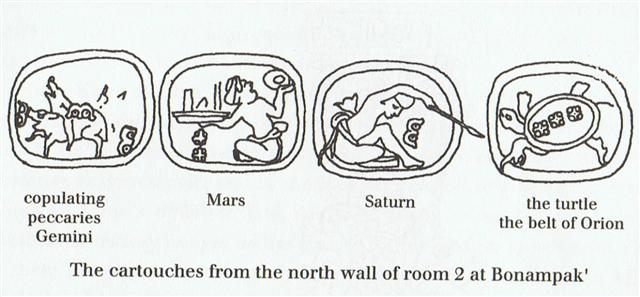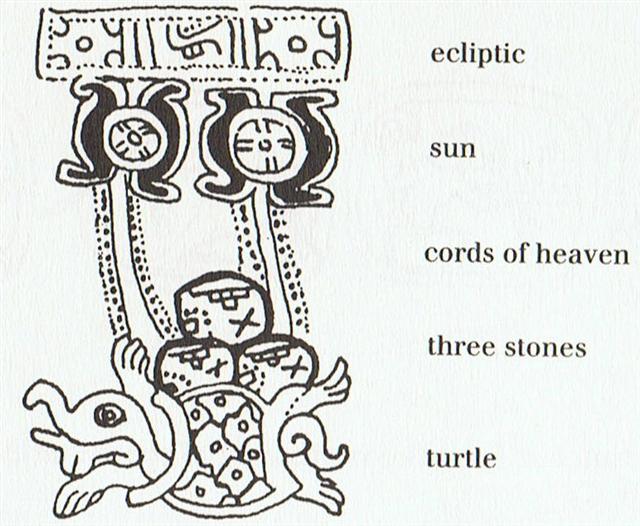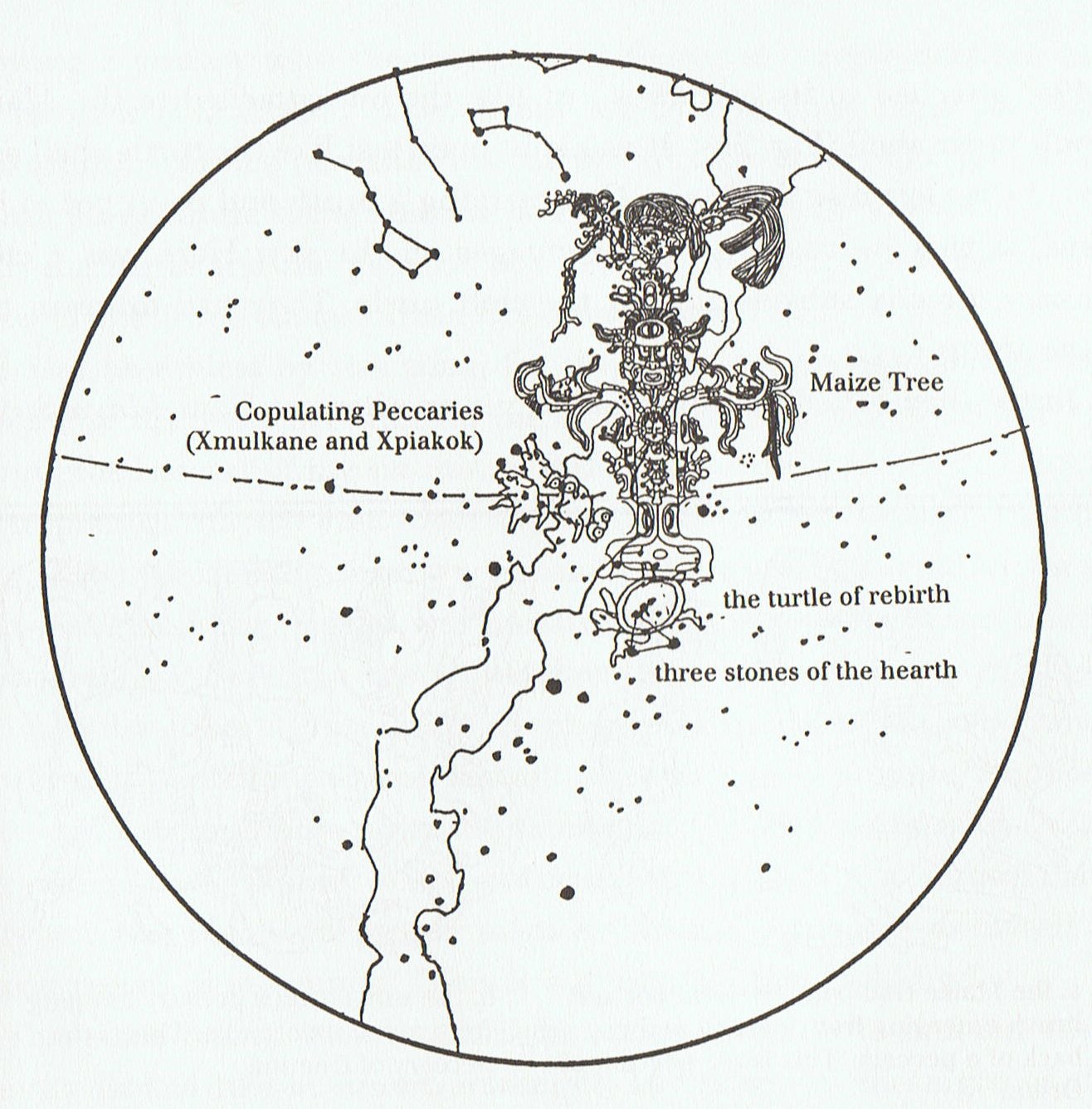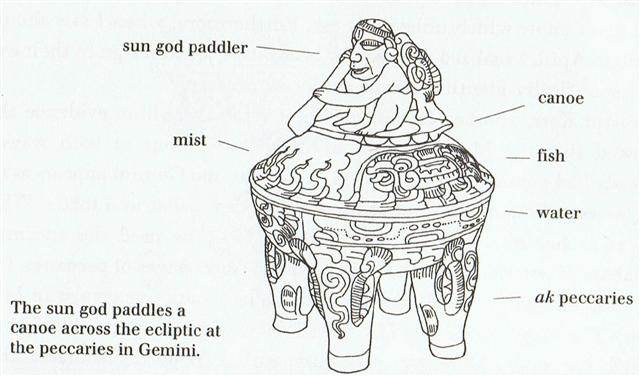|
TRANSLATIONS
The last page in the series from the link 'te pito o te henua':
The Maya seem to have used different glyph types for the 'stars' (including planets). Gemini has (according to the picture above) a double set of Venus glyphs. The three stars on the carapace of the turtle (the belt stars of Orion) have a another design which I will comment upon below. Saturn has a glyph which at first glance looks like that of Venus, however, its colours are reversed: white pupils against a black background. The 'mist' at the front end of the sun god canoe may be vapour from the hot water resulting when the sun 'canoe' (following the ecliptic) turns lower and meets the water of the Otherworld. The Otherworld is dark as the deeps of the ocean. A footnote from Maya Cosmos: "... A sensation of swimming is documented for trance states among many peoples across the world. Most specifically, a segment on A&E's Footsteps of Man featuring David Lewis-William's work with the Bush-men of Kalahari shows them making swimming motions as they lie in the sand after collapsing in deep trance. These sensations have been reported by many other groups around the world and seem to be part of the physiological response many human beings have during trance experiencees ..." To faint (swoon) is in the Swedish language 'svimma', while to swim is 'simma'. The concept of faint means weak. In the dark light is faint. The life signs are weak in someone who has fainted. Winter and night are faint states. Vaivai = weak. The pattern in the 3 glyphs for the turtle stars looks like the pattern in the 2 glyphs for Mars. From this fact and the double Venus signs for Gemini we should conclude that number is a quality necessary for 'reading glyphs'. The 3 stones of the hearth together with the 2 belt stars outside the triangular hearth makes 5 (rima) and should associate to fire. When the pattern of 5 is like that seen in the glyphs for Mars and the belt stars, i.e. a square with a central great 'star', it is the form which according to Maya Cosmos has been named quincunx: "... the triune aspect of the Spanish God would have made as much sense to the Maya farmer as to his king because all Yukatek Maya understood the fourfold nature of divinity. This concept remains at the center of their religion today. Hunabk'u, the Oneness God of the Spanish, also made sense to Precolumbian village shamans and kings because all Yukatek Maya understood, and understands today, that at the center of the fourfold cosmos is the one." The quincunx pattern is shown also in the ecliptic band (in the hanging turtle picture above). In the shell of the turtle another similar 4 + 1 pattern is repeated as the meshes (mata) in a net. The irregular border lines in the mata suggest a net. The triple stars, each with a quincunx sign, measures 3 * 5 = 15 together, and the oval of the turtle shell probably signifies full moon. In the picture with Saturn it should be noticed how Saturn and the Turtle belong together. Not only does Saturn point at the Turtle, but at bottom left in both cartouches a 'limb' is stretching out over the border lines.
These two 'limbs' have a similar Y-form, a grip on the cartouches. The Turtle 'Y-limb' also has an eye and forms one of the fore-paws. We have lots to learn. The last page of the hakaturou 'chapter':
I had to draw the line somewhere, but there is - for example - nothing said about the 'broken neck' sign:
Instead of a 'joint' at left (back side) as in Aa1-5 this 'joint' is in front and high. We remember the 3 kinds of tuli (or 4 counting also the bird): ... When the baby is born a golden plover flies over and alights upon the reef. (Kua fanau lā te pepe kae lele mai te tuli oi tū mai i te papa). And so the woman thus names various parts of the child beginning with the name 'the plover' (tuli): neck (tuliulu), elbow (tulilima), knee (tulivae). 2 knees, 2 elbows and 1 neck makes 5 (rima). Adding the bird (kuhane?) we reach 6 (like the number of stars in Matariki, Tauono). |







